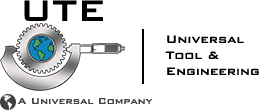FAQs: Fiber Laser Cutting Machines
Do fiber laser cutters require more maintenance than CO2 laser cutters?
No, fiber lasers have fewer moving parts, and this requires less maintenance. Fiber lasers also use less energy than CO2 lasers.
What is the lifespan of a fiber laser? Does the fiber laser wear out over time like a CO2 laser?
Fiber lasers usually last up to 100,000 hours before you see any deterioration, while CO2 lasers generally start to deteriorate after 30,000 hours.
What is the cutting thickness of the fiber laser cutting machine?
The maximum thickness of metal fiber laser cutting machines can handle is influenced by the laser's power and the type of material. Typically, these machines cut metal up to 1 inch thick. Nonetheless, with the appropriate settings, some models can process materials up to 6 inches thick. Ultimately, the achievable thickness depends on the specifications of the machine.
What are the types of lasers?
There are 5 main types of lasers: Fiber Lasers, Gas Lasers, Solid State Lasers, Liquid Lasers, and Semi-Conductor lasers. These types can also be broken down into two more categories, Continuous- wave lasers, and pulsed lasers.
Why use a fiber laser for cutting?
A fiber laser is faster and costs less to operate than a CO2 Laser. A Fiber laser makes a cleaner cut than plasma, and costs less to operate. A water jet makes a clean cut, but it is slow and requires more maintenance.
How accurate is a fiber laser cutter?
Most fiber lasers are accurate within 0.03mm
Can a fiber laser cut stainless steel?
Yes, fiber lasers are an excellent choice for cutting stainless steel.
How much laser power do I need?
The laser power you need depends on two main factors: material and thickness. Power required is proportional to thickness. The more power the thicker material you can cut. Increased laser power is more efficient for cutting high-reflective metals, as it allows the laser beam to function more consistently without being disrupted by back-reflection.
Does a fiber laser cut faster than a waterjet?
Yes, with thinner materials the fiber laser can be 10 times faster than the waterjet. Lasers typically cut 20-1000” per minute, whereas water jets typically cut 1-20” per minute.
How easy is it to operate the laser machine?
With the advances of technology, the operating software of most sheet lasers is very user-friendly. Universal Tool & Engineering provides onsite training and support with every machine purchased.
Is it safe to operate fiber laser cutting machines?
Yes, with appropriate safety features on the machines and proper operator safety. Like all industrial machines, fiber lasers can be dangerous to operate. It is important to choose a fiber laser cutting machine built with precautions for safety. For example, the laser beam can cause eye damage if you look directly at it with no protection. We build our machines with safety glasses built into the machine for operators to look through. We also provide all operators with additional safety glasses coated to protect their eyes from the laser. We also provide a high-quality fume/dust collecting system.
What affects the fiber laser cutting accuracy?
After selecting the appropriate cutting machine, one of the largest factors in cutting accuracy is the quality of the material you’re cutting. Higher quality material creates a more precise and cleaner cut. When cutting different materials, it’s always recommended to cut a few sample pieces to tune your parameters.
How to find the focal position / active focus of the fiber laser cutter?
The focal position of a fiber laser, sometimes referred to as active focus, refers to the distance from the laser's focal point to the surface of the material being cut. Fiber laser heads often include auto-focus, making setup simple. UTE’s laser heads come with auto-focus as a standard feature.
What is a laser?
A laser is a device that emits light through a process of optical amplification based on the stimulated emission of electromagnetic radiation. Laser is an acronym for Light Amplification by Stimulated Emission of Radiation. Lasers are used throughout many industries for many applications other than cutting.
Does a fiber laser require assist gas?
A fiber laser can cut certain materials and various thickness with just compressed air. The ability to cut with only compressed air helps keep your hourly operating cost low. The right assist gas can improve the edge quality and can increase the cutting speeds substantially for certain materials. The most common assist gases are compressed air, nitrogen, oxygen, and argon.
Can a sheet fiber laser engrave?
Yes, all of UTE’s lasers are capable of engraving on a variety of materials.
What materials can a fiber laser cut?
The fiber laser is one of the most versatile machines when it comes to cutting. The fiber laser can cut stainless steel, carbon/mild steel, aluminum, copper, titanium, nickel alloys, plastic, cardboard, paper, acrylic, graphite, and wood.
How much power does a fiber laser use?
Fiber laser systems power usage is typically rated in watts (W), with power options ranging from 10W to as high as 60,000W. Higher power levels enable these lasers to cut a broader variety of materials more effectively. For example, a 1000W fiber laser machine might generally consume about 4 kWh, with an additional 3 kWh used by the water chiller, and approximately 4 kWh for the servo motor and machine bed components. When operating at full capacity, the total electrical consumption reaches around 11 kWh. However, at a 60% utilization rate, actual power usage would be closer to 6.6 kWh.


